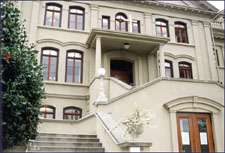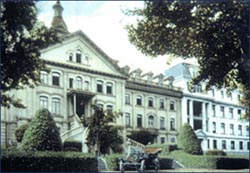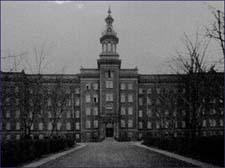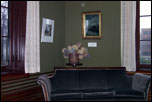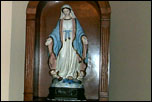
| PLACES | |||||||
| Chapel | |||||||
| Humboldt Gates | |||||||
| Academy Green | |||||||
| Arboretum | |||||||
| Former Cemetery | |||||||
| 1871 Building | |||||||
| Convent | |||||||
| Interpretive Centre | |||||||
|
|||||||
| 1910 Addition | |||||||
| Auditorium | |||||||
| Orchard | |||||||
| Novitiate Garden | |||||||
| Courtyard | |||||||
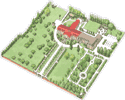 |
|||||||
|
click on map for
larger view |
|
n 1886, construction
began on the east wing of the Academy, as the Sisters had quickly
outgrown the 1871 building. There is evidence that the Academy had
expected the
growth of the school to continue, and had requested
that Vereydhen plan for an additional wing. Architect John Teague
oversaw the construction of this part of the building, and actually
signed the 1886 plans and drawings.
The style of
architecture was, of course, based upon Michaud's 1871 wing, and
in keeping with its French Canadian influences. The 1886 additions
created a very horizontal, symmetrical building that focused visitors'
attention on the main entrance. Many features were neo-classical,
meaning that they were influenced by the great architecture of the
Ancient Greek and Roman world. The triangular overhang that sits
over the entrance is known as a pediment. This type of entrance,
in a pavilion design, made the building into a monumental piece
of architecture, divided into sections or bays, by the rows of attached
columns called pilasters. The windows, with a slightly rounded frame
at the top of the pane, sat within these bays. The parapet at the
roofline was balustraded, or given a railing, with five dormer windows
to match the 1871 wing. While the original
wing had been very vertical, with the design emphasizing the height,
the additions gave the Academy mass and horizontality. The school
stretched across the south end of the grounds and planted itself
in the ground with the coursed base of the pilasters, which were
divided into block-like sections. The windows were underlined with
a string course, a thin band running across the front of the building,
to give a sense from the outside of where the floors were divided
on the inside of the school. These features helped to give the brick
architecture the appearance of stone, the material which would have
been most popular in Quebec.
The new entrance
block was capped by a bell tower, with a cross at the very top.
This became a major feature of the Victoria skyline, and can still
be seen over the treetops from several blocks away. Having such
a focal point was another design motif that linked this building
to the French Canadian origins of the Sisters. It is clear, comparing
St. Ann's Academy in Victoria with the Mother House of the Sisters
in Lachine, Quebec, that this particular combination of ecclesiastical,
institutional and Classical Revival architecture was also popular
in Eastern Canada. More
on the Interpretive Centre
Contact
St. Anns Academy at stanns.academy@gems2.gov.bc.ca
Contact the Webmaster at zeroone@zeroonedesign.com
|
